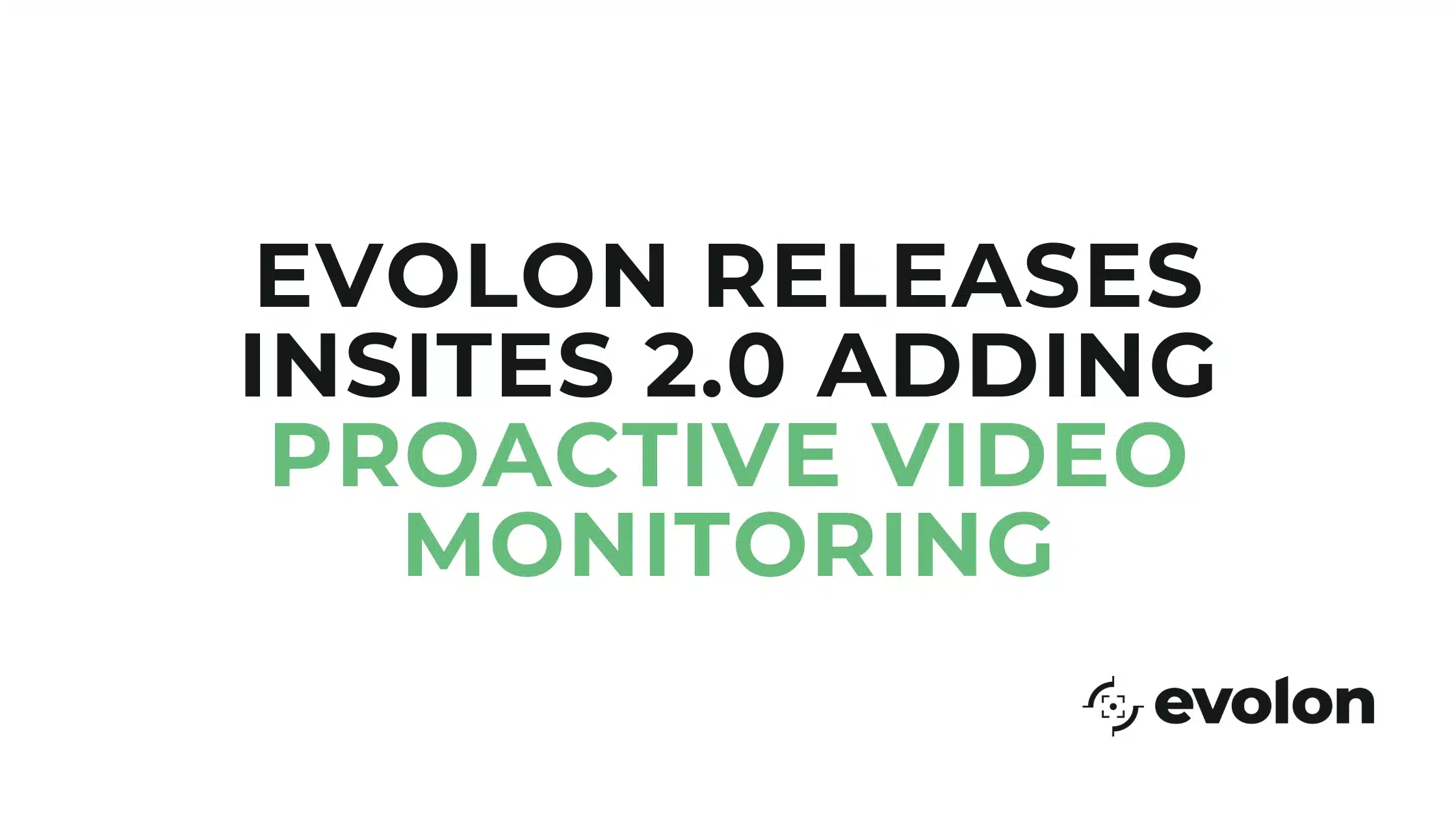
Learn The Business Benefits of Using AI for Video Analytics
AI-driven video analytics are in the security market, where cutting-edge technologies like computer vision and machine learning transform how we protect, monitor, and analyze our surroundings. This blog will explore the business impact of incorporating AI-powered video analytics systems. The benefits are undeniable, from increased efficiency and improved decision-making to enhanced customer service, reduced risk, and increased revenue.
Perimeter security and video monitoring have always been challenging. Threats and technology evolve, and our processes match up for modernized protection. Before the advancements of video AI, much of the video monitoring and rapid response efforts involved manual work by security operators and many missed threats. We’ll focus on the two most significant challenges video monitoring operations face in today’s security environment.
Cry Wolf Syndrome
Many can imagine how daunting monitoring live video feeds can be throughout a working shift. Motion detection is a standard method monitoring centers use to create alerts that operators respond to. Motion detection often makes false alerts that operators must legally check and clear within their system. As false alerts pile up, operators are quickly fatigued and assume all incoming alerts are inaccurate. Just as the story of The Boy That Cried Wolf goes, operators become numb to incoming alerts and can miss genuine threats incoming. Adding AI verification provides operators with a superpower. The AI models will evaluate all incoming threat alerts, classify objects, detect actual threats, and verify that the alarm is accurate. This verification process allows operators to remain vigilant, focused, and respond quickly to real threats.
Scalability of Monitoring Operations
Picture, if you will, an airport. Hundreds or thousands of surveillance cameras will secure the perimeter, operations, and active zones. The reactive choice is to allow these cameras to record and store video data, and only after a threat event has happened will data analysis occur. Being reactive to video surveillance systems should be avoided in the modern era. The proactive choice is to monitor the real-time video feeds to identify and verify threats and deploy active responses quickly. The challenge for monitoring the perimeter becomes scalability. It is impossible for an individual or team of monitoring operators to watch and respond to threats manually and accurately. As camera count and threat intensity increase, the scaling challenge becomes worse. Adding AI acts as a force multiplier to the security operations team. The monitoring team can now accurately protect the perimeter with fewer resources allocated. In this scenario, AI will monitor video feeds with beyond-human accuracy and provide the operations team with only verified threat alerts. Video AI becomes the front-line resource on your security monitoring team, empowering individuals to focus on what matters most.
Business Benefits to Video AI
AI-driven video analytics shifts the paradigm dramatically. Intelligent algorithms and computer vision techniques enable the automation of tasks that once required human intervention. Video AI can detect and track objects, identify suspicious behaviors, and issue real-time alerts, all in a fraction of the time. As we automate these processes, security operators can focus on critical tasks, making operations more efficient and resource allocation more effective.
We’ve discussed a few of the common challenges that security operations and monitoring teams face today, and now we will look at AI’s benefits.
Improved Decision-Making
AI models can analyze vast amounts of data quickly and accurately. Evolon Insites cloud architecture leverages Amazon Web Services‘ powerful server and GPU (graphics processing units) to deliver always-improving advanced AI. When applied to video analytics in the security industry, AI can extract valuable insights from surveillance footage that are otherwise inaccessible.
Reducing operator fatigue with fewer yet accurate alerts allows monitoring agents to make well-informed and calculated response decisions. Beyond immediate threats, machine learning algorithms can detect patterns, identify anomalies, and generate actionable intelligence.
The added insights data provides an enhanced situational awareness and empowers security professionals to make well-informed decisions quickly. Operators can proactively respond to real-time threats, prevent incidents in the future, and create a safer environment.
Optimal Resource Allocation
Analytics data provides information about perimeter security, scene activity, camera and device usage, and more. Leveraging this data allows security professionals to allocate technology and human resources effectively for an optimized security operation.
Starting with perimeter security and scene activity, understanding event and object meta-data will clarify the security posture across the organization. An example could be an airport customer identifying a section of the perimeter with high alert volumes at specific times of the day. Diving into this data will allow the security team to determine what is causing this spike in activity at the perimeter. It could be general airport operations activity, short-term construction, or an area of interest for bad actors, identifying an area of interest for additional focus.
Scene data enables security operators to identify specific camera feed scenes with abnormal threat alerts. If a security team sees that one particular camera view has a high alarm volume, further investigation could uncover a need to tweak the AI settings, a lousy camera or camera angle, constant scene interruptions such as animal paths, or an area of interest for additional threat protection.
With AI deployed within a security system, operators can begin tracking insightful data like this to optimize the overall security posture. Whether the need is reallocating cameras, tweaking AI settings, or pushing physical guard presence to an area of interest, data is needed to make these strategic decisions.
Enhanced Customer Experience
Customers of security system monitoring expect real-time security of their people, places, and assets. Video AI enabling more accurate and proactive monitoring exceeds these customers’ expectations. Security professionals can leverage analytics insights to optimize technology and people on-site, which provides ongoing system management. Together, these activities from the service provider side create a bespoke experience for each end-user customer.
Evolon Insites provides a multi-tenancy platform allowing service providers to grant their customers access to the analytics dashboard and data. System providers who monitor and communicate with customers on analytics data will position themselves as business partners, solidifying a long-term relationship.
Increased Revenue and Profitability
Evolon provides Edge-to-Cloud AI that can be installed and applied to any surveillance camera and NVR in existing security installations. AI that works on any camera significantly lowers the barrier to entry, allowing service providers to offer AI to any existing customer, regardless of the technology deployed.
For businesses focused on building RMR around their security offerings, adding AI is an easy way to grow revenue while dramatically improving customer security. For the customer and provider, video AI optimizes resource allocation for technology and people, lowering operations costs.
Lower operational costs for the end user open the budget for vital security projects. When additional cameras and technologies are needed for improved security posture, video AI can accomplish a similar result without the added capital expenditure. Organizations must maximize their existing security technology potential with AI to reallocate the budget to the most impact areas.
Lower operational costs for the service provider allow the business to increase profitability on existing security services offered substantially. On the top line, service providers are building more substantial recurring revenue that improves the valuation and interest in the investment of their business.


